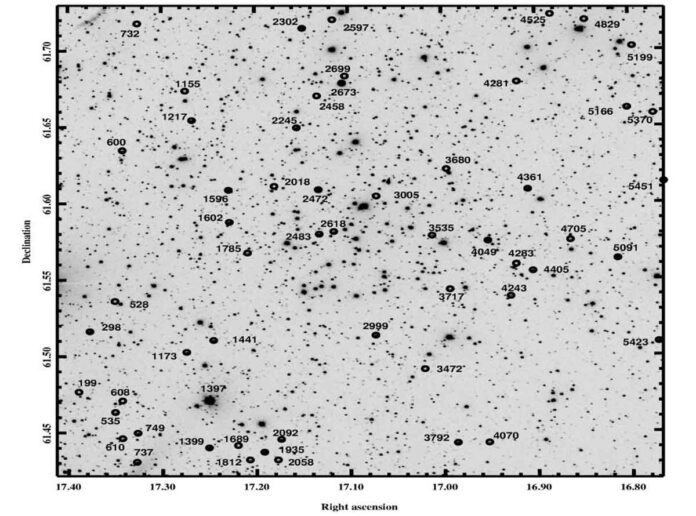Astronomers from India’s Aryabhatta Research Institute of Observational Science (ARIES) and Physical Research Laboratory have discovered 57 variable stars in the field of the open cluster NGC 381. The discovery was detailed in a paper published on the arXiv preprint server on December 19.
Open clusters (OCs) are groups of stars that are gravitationally bound to each other and formed from the same giant molecular cloud. More than 1,000 of them have been discovered so far in the Milky Way. Scientists are still looking for more in the hope of discovering a variety of these stellar groupings. Increasing the number of known galactic OCs and studying them in depth could help us better understand the formation and evolution of our galaxy.
Detecting and studying variable stars in OC environments could provide important clues about stellar structure and evolution. It may also be useful in furthering our understanding of the universe’s distance scale.
NGC 381 is also known as Collinder 10. It is a sparse open cluster with a radius of about 15 light-years and a mass of about 32.4 solar masses. It is located about 3,700 light-years away in the constellation Cassiopeia. Despite the fact that NGC 381 has been studied extensively, very little is known about its variable star content.
A team of astronomers led by ARIES’ Jayanand Maurya conducted the first variability study of NGC 381 and its surroundings. They used the 1.3-m Devasthal Fast Optical Telescope (DFOT) in India for this purpose.
The team discovered 57 periodic variable stars in the field of NGC 381. Five of which were cluster members. These variables were classified by astronomers based on the shape of their light curves, period, amplitude, and location on the Hertzsprung-Russell (HR) diagrams.
According to the study, ten of the 57 identified variables are eclipsing binaries. Eight of which are of the W UMa type (EW) and two of which are of the Algol type (EA). There are also 15 rotational variable stars and two pulsating variables in the sample. One of the Delta Scuti type and one of the Gamma Doradus type.
The remaining 30 variables could not be assigned to a specific type. So, the researchers labelled them “miscellaneous type variables.” More time-series data, combined with a spectroscopic study, are required to characterise these variables.
More information: Jayanand Maurya et al, Investigating stellar variability in the open cluster region NGC 381, arXiv (2022). DOI: 10.48550/arxiv.2212.09386

